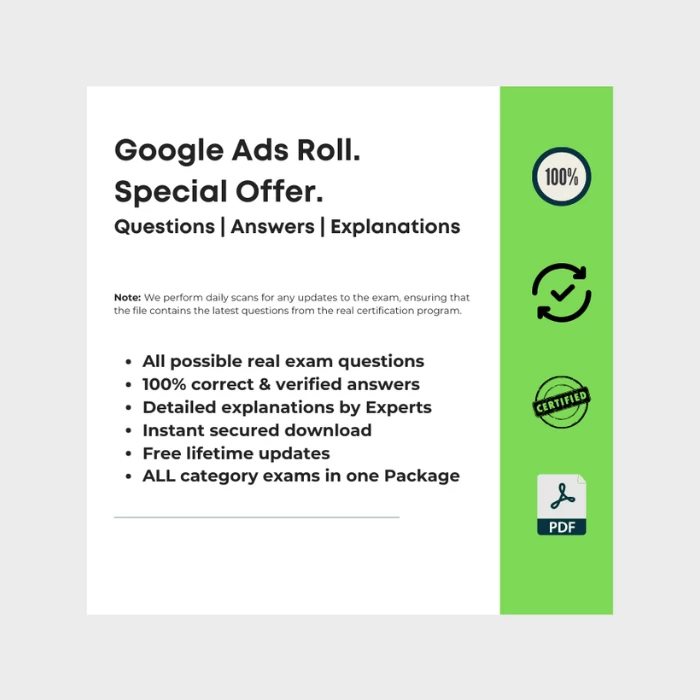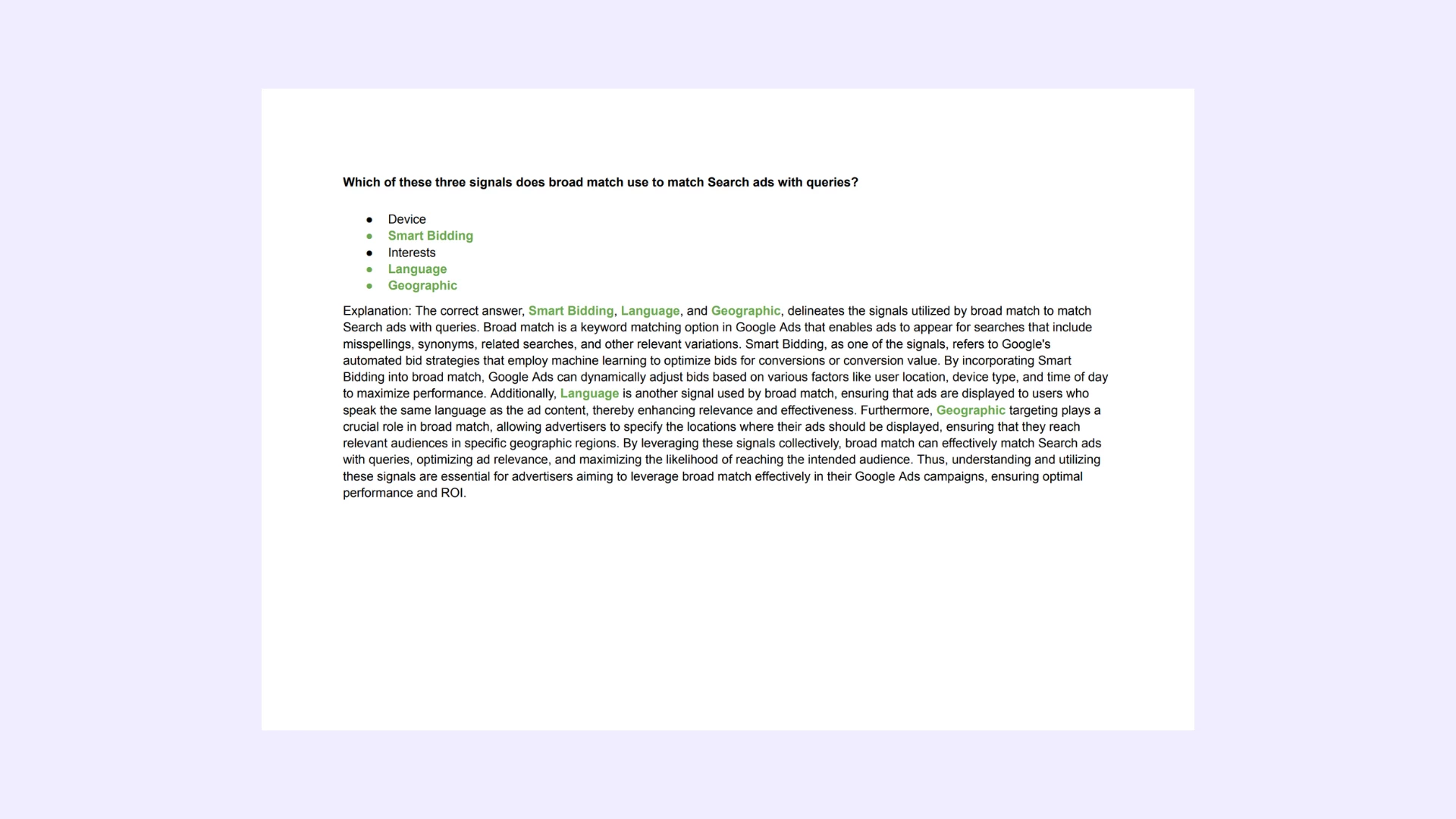How would you describe a campaign that fell short of its target goal?
As a video campaign that had an expected brand favorability lift of 5% and an actual brand favorability lift of 5%.
As an email remarketing campaign that had an expected lift in brand awareness of 5% and an actual lift in brand awareness of 12%
As a search campaign that had an expected increase in return on ad spend of $50.12 and an actual return on ad spend of $10.
As a display campaign that had an expected brand awareness lift of 10% and an actual brand awareness lift of 20%.
Choose an option to see if it’s correct. Check the explanation below. Learn Smarter, not Harder.

Google Ads Roll. Includes Answers for Every Real Google Ads Certification Exam.
All-in-One: Get all Google Ads exams answers with explanations in one bundle. This package includes answers for every current Google Ads certification. Regular updates to reflect the latest exam version. -> See what's included.
Questions | Answers | Explanations. Free Lifetime Updates.


Need a single cerification exam answers? Check out our -> list of certification exams answer keys. Learn Smarter. Obtain or Renew your certificates with peace of mind!
Explanation: How would you describe a campaign that fell short of its target goal?
Explanation: A campaign that fell short of its target goal would be described as a search campaign that had an expected increase in return on ad spend of $50.12 and an actual return on ad spend of $10. This option is correct because it clearly indicates a discrepancy between the expected and actual performance of the campaign in terms of return on ad spend (ROAS), which measures the revenue generated for each dollar spent on advertising. In this scenario, the expected increase in ROAS was $50.12, indicating the desired level of profitability or efficiency that the campaign aimed to achieve. However, the actual ROAS achieved was only $10, significantly lower than the expected target. This shortfall suggests that the campaign did not meet its performance goals and failed to generate the anticipated level of return on investment (ROI) for the advertising expenditure. By highlighting the gap between expected and actual outcomes, this description effectively communicates the underperformance of the campaign and the need for further analysis and optimization to improve future results. The other options listed—describing a video campaign with an expected and actual brand favorability lift, an email remarketing campaign with expected and actual lift in brand awareness, or a display campaign with expected and actual brand awareness lift—do not explicitly address the concept of falling short of a target goal in terms of performance metrics such as ROAS, making them incorrect choices.
Were do I find this certification program?
This certification program is available on the Google SkillShop Platform. With our file, you can get certified in just a few minutes. Free updates are included.
Save time on exams and spend more time practicing.
Best-value Guides
- Special Bundle Offer Google_Ads_Roll
- Special Bundle Offer HubSpot_Exams_Roll
- Special Bundle Offer Google_SkillShop_Roll
- Special Bundle Offer Marketing_Platforms_Roll